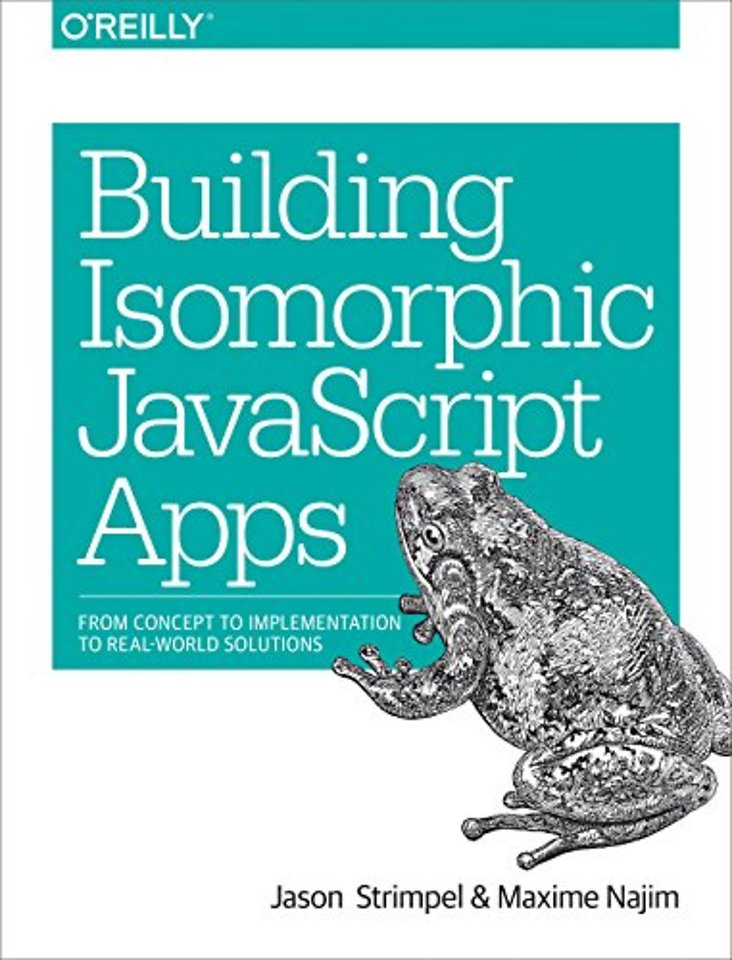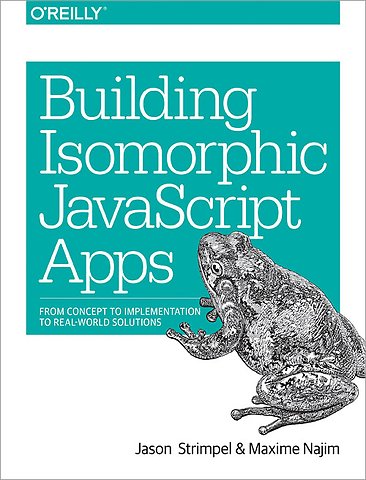Building Isomorphic JavaScript Apps
From Concept to Implementation to Real-World Solutions
Samenvatting
Often referred to as the holy grail of web application development, isomorphic JavaScript lets you run the same code on both the browser client and web application server. This hands-on guide shows you a practical approach to building and maintaining your own isomorphic JavaScript apps. You’ll learn why this application architecture has become an increasingly popular way to fix business-critical issues such as page-load speeds and SEO compatibility.
Isomorphic JavaScript is becoming a real game changer, even for teams used to very different server stacks. Authors Jason Strimpel and Maxime Najim demonstrate why companies including Walmart, Airbnb, Facebook, and Netflix have adopted isomorphic libraries.
- Understand how isomorphic JavaScript can dramatically improve user experience
- Define a contract between the framework and your application for responding to resource requests
- Take framework and application code from server to client to make it an isomorphic codebase
- Create common abstractions, get and set cookies, and redirect user requests
- Learn why isomorphic JavaScript can finally bring a halt to the fat-server, fat-client pendulum
- Learn about advanced isomorphic JavaScript topics like collaborative, real-time applications
Specificaties
Inhoudsopgave
Part 1: Introduction and Key Concepts
1. Why Isomorphic JavaScript?
-Defining Isomorphic JavaScript
-Evaluating Other Web Application Architecture Solutions
-Caveat: When Not to Go Isomorphic
-Summary
2. Isomorphic JavaScript as a Spectrum
-Sharing Views
-Sharing Routes
-Sharing Models
-Summary
3. Different Categories of Isomorphic JavaScript
-Environment Agnostic
-Shimmed for Each Environment
-Summary
4. Going Beyond Server-Side Rendering
-Real-Time Web Applications
-Summary
Part 2: Building Our First App
5. Getting Started
-Getting Node Up and Running
-Setting Up the Application Project
-Summary
6. Serving Our First HTML Document
-Serving an HTML Template
-Working with Path and Query Parameters
-Summary
7. Architecting Our Application
-Understanding the Problem
-Responding to User Requests
-Summary
8. Transporting the Application to the Client
-Bundling Our Application for the Client
-Responding to User Requests
-Routing on the Client
-Organizing Our Code
-Summary
9. Creating Common Abstractions
-When and Why to Use Abstraction
-Getting and Setting Cookies
-Redirecting a Request
-Summary
10. Serializing, Deserializing, and Attaching
-Serializing Data
-Creating a Controller Instance
-Deserializing Data
-Attaching DOM Event Handlers
-Verifying the Rehydration Process
-Summary
11. Closing Thoughts
-Production Readiness
-Knowing How Much Structure Is Needed
-Conclusion
Part 3: Real-World Solutions
12. Isomorphic React.js at WalmartLabs
-Origin of a Species
-React Boilerplate and Patterns
-The Walmart Approach
-Overcoming Challenges
-Next Steps
-Acknowledgments
-Postscript
13. Full Stack Angular
-Isomorphic JavaScript: The Future of Web Apps
-Isomorphic Angular 1
-Angular 2 Server Rendering
-Angular Universal
-GetHuman.com
-Postscript
14. Brisket
-The Problem
-Best of Both Worlds
-Early Brisket
-Making It Real
-Code Freedom
-Consistent API Across Environments
-Stay Out of the Way of Progress
-What’s Next for Brisket?
-Postscript
15. “Colony” Case Study: Isomorphic Apps Without Node
-The Problem
-Templating
-Data
-Transpiled View Models
-Layouts
-Page Maker
-Frontend Single-Page App
-Final Architecture
-Next Steps
16. Final Thoughts
-Families of Design Patterns, Flux, and Isomorphic JavaScript
Index
Anderen die dit boek kochten, kochten ook
Net verschenen
Rubrieken
- aanbestedingsrecht
- aansprakelijkheids- en verzekeringsrecht
- accountancy
- algemeen juridisch
- arbeidsrecht
- bank- en effectenrecht
- bestuursrecht
- bouwrecht
- burgerlijk recht en procesrecht
- europees-internationaal recht
- fiscaal recht
- gezondheidsrecht
- insolventierecht
- intellectuele eigendom en ict-recht
- management
- mens en maatschappij
- milieu- en omgevingsrecht
- notarieel recht
- ondernemingsrecht
- pensioenrecht
- personen- en familierecht
- sociale zekerheidsrecht
- staatsrecht
- strafrecht en criminologie
- vastgoed- en huurrecht
- vreemdelingenrecht








